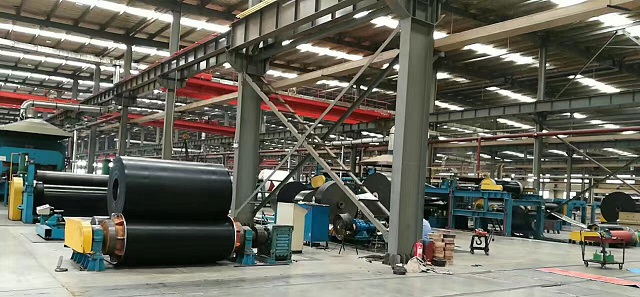News
The most important index of rubber conveyor belt-----Tensile Strength
The tensile strength is the root limit ability of the product to resist tensile failure. It is one of the important indicators of rubber products. The life of many rubber products is directly related to the tensile strength. For example, the durability of the cover rubber of the conveyor belt and the rubber shock absorber are improved with the increase of the tensile strength.
The tensile strength is related to the structure of the rubber. When the amount is small, the intermolecular interaction is less important. Therefore, when the external force is greater than the intermolecular action, intermolecular sliding will occur and the material will be destroyed. On the contrary, the molecular weight is large, the intermolecular force is increased, the cohesion of the rubber compound is increased, and the chain segment is not easy to slide during stretching, so the degree of damage of the material is small. All other factors that affect the intermolecular force have an impact on the tensile strength. Such as NR/CR/CSM, these rubbers have crystalline substituents on the main chain, and the intermolecular valence force is greatly improved, and the tensile strength also increases. That is one of the main reasons for the good self-reinforcing properties of these rubbers. Generally, as the crystallinity of rubber increases, the tensile strength increases. The tensile strength is also related to temperature. The tensile strength at high temperature is much lower than the tensile strength at room temperature. The tensile strength is related to the cross-linking density. As the cross-linking density increases, the tensile strength increases. After the maximum value appears, the cross-linking density continues to increase, and the tensile strength will drop significantly. The tensile strength of vulcanized rubber decreases as the cross-linking bond energy increases. Natural rubber that can produce tensile crystallization, the weak bond breaks early, which is conducive to the orientation crystallization of the main bond, so it will have a higher tensile strength. Through the vulcanization system, sulfur vulcanization is used, and the combination of accelerators is selected, DM/M/D can also increase the tensile strength (except for carbon black reinforcement, because of the heat generation effect of carbon black),
1. The relationship between tensile strength and filler
Reinforcing agent is one of the important factors affecting tensile strength. The smaller the diameter of the filler, the larger the specific surface area and the greater the surface activity, the better the reinforcement performance. The vulcanizate of crystalline rubber has a monotonous decline because it is self-reinforcing amorphous rubber such as styrene butadiene rubber. As the amount increases, the reinforcement performance increases, and overuse will decrease the interest. The low-dispersion rubber reaches its maximum value as the amount increases and can remain unchanged.
2, the relationship between tensile strength and softener
The addition of softener will reduce the tensile strength, but a small amount of it, generally less than 7 parts in the open mill, and less than 5 parts in the internal mixer, will improve the dispersion and help increase the tensile strength. Different softeners have different degrees of reduction in tensile strength. Generally natural rubber is suitable for vegetable oils. Aromatic oil for non-polar rubber, such as SBR/IR/BR... such as paraffin oil and naphthenic oil for IIR/EPDM. NBR/CR uses DBP/DOP. and the like.
Other ways to improve the tensile strength include rubber and resin blending, chemical modification of rubber, and surface modification of fillers.

CATEGORIES
LATEST NEWS
- Which Country is The Best Choice for Purchasing Conveyor Bel2021-11-11
- What are the most commonly used areas of belt conveyors?2021-06-24
- Analyze the importance of flame-resistant conveyor belt from2021-06-10
- The most important index of rubber conveyor belt-----Tensile2021-06-09
- Carbon Black----One of the key factors affecting the quality2021-05-27
CONTACT US
Contact: Overseas Department
Phone:
Tel: +86-312-5308005
Email: info@sungdagroup.com
Add: Boye Rubber Industry Technical Development Park Baoding city, China
